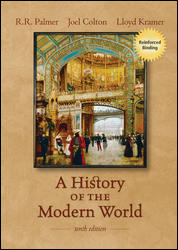
History of the Modern World, 10th Edition (Palmer)Chapter 11: Industries, Ideas, and the Struggle for Reform, 1815-1848Chapter OverviewIn the three decades before 1815, two revolutions had swept through Europe. A political revolution, associated with the French Revolution, affected the institutions of government, law, and the relations between social classes on the continent. That revolution appeared to halt with the defeat of Napoleon and the peace of Vienna in 1815. However, the other revolution worked against the forces of reaction that had momentarily triumphed. The Industrial Revolution first transformed England, and then spread to the continent. It enlarged the middle and working classes, whose political demands challenged the conservatism of monarchs, and led to the growth of large urban centers. Together, these two revolutions sparked a proliferation of new movements and doctrines, or “isms,” many of which continue to exert an influence in the present. The triumph of the bourgeoisie left its mark on Europe, but the increasing estrangement of labor led to fears of renewed revolution. Politically, the powers that had defeated Napoleon sought to stem the tide of revolution, while making some concessions to liberalism both domestically and internationally. A schism emerged between an increasingly liberal western Europe and an autocratic eastern Europe, and instability was further exacerbated by the lack of an international system. The tensions between the repressive atmosphere established by the forces of reaction and the hopes still tied to notions of progress and individual rights would lead to the Revolution of 1848. |  |















